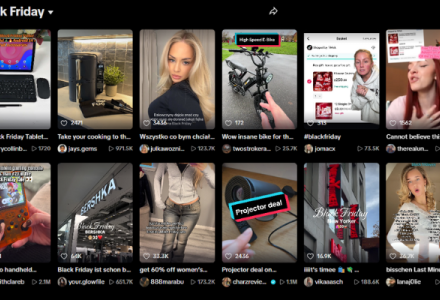HFSS UK Restrictions Roll-Out
With new HFSS (high fat, salt and sugar) UK regulations coming into effect from 1st October, last week saw the impacts start to play out on Amazon.co.uk, with a raft of advertising campaigns archived as a result, due to Amazon applying restrictions at total category level.
Most grocery brands were aware of the new HFSS regulations as they have major implications for their traditional bricks and mortar grocery business, however they didn’t necessarily make the connection with ecommerce.
A lack of information in advance from Amazon, meant most brands were unprepared, having not yet uploaded HFSS scores. Confusion has also arisen relating to the interpretation of ‘placements’ which the first phase of HFSS legislation relates to. Amazon has clearly interpreted this to include all on site advertising placements – even those within the search results, which are only displayed when a customer has actively searched for a product. From Tambo’s interpretation, the wider restrictions on digital advertising in general do not come into effect until 2024.
Brands who weren’t expecting to be affected as their product type wouldn’t be classed as ‘less healthy’ under HFSS legislation have also been impacted. For example, a ground coffee brand faced the same problems because Amazon implemented restrictions at total category level (presumably due to premixed sugary coffee drinks). We are also aware of brands caught totally unaware, such as supplements, as they maintain that HFSS does not apply to their products.
If your product belongs to a niche category, with few or irrelevant competitors, hopefully damage will be limited, and it will be easy to get the ranking back up if lost at all. But in a competitive category, like many grocery products, losing ads means giving way to other relevant competitors. It will then be much harder (and expensive) to improve the rankings in a short time. Of course this is over simplifying a complex situation, and it will vary greatly from category to category – for instance in the crisps category most major brands will have been impacted in the same way, and it will be those that respond fastest that gain the advantage.
Why is this making an impact?
Amazon Algorithm's ranking is based on a few factors such as sales velocity, best-seller category ranking, glance views, click-through rate and stock availability. Anything that makes a product ‘relevant’ in the eyes of Amazon.
A temporary absence of ad campaigns will alter the short-term visibility of products which can mean an immediate loss of sales. It also results in reduced glance views and sales velocity which negatively impact the relevancy and search result ranking. The listing will need to ‘recover’ before it returns to previous sales levels and, depending on investment and competitor activity, this could be short to mid-term. Another reminder that Amazon is firmly a pay to play platform now.
The other issue, as a result of the way Amazon has actually archived ad campaigns rather than just pausing, is that some campaigns need to be recreated from scratch. The success of campaigns is closely linked to their staying "always-on" and continually gathering data and machine learning that Amazon uses to increase the ad relevancy. New campaigns mean higher bids, less impressions and, as a result, slower sales and low ROI. This is the bigger area of concern for brands and at present it is unclear if there is anything Amazon can do to reverse it.
Tambo’s POV
If you need help calculating your HFSS scores click here. Products will need to score below 4 (different levels for vegetable based products) to be classified as ‘more healthy’ and remain eligible for sponsored ad placements on Amazon. Offsite DSP advertising will remain for now until further phases of the legislation are introduced.
If you think this doesn’t apply to your products you may want to think again, as some brands within the supplements category, for example, were caught off guard. For a full list of categories covered by the regulations click here.
Our advice? If you haven’t checked your advertising campaigns yet this week, take a look asap. We have been helping our clients with restricted products map out how they can continue to promote their products on Amazon within this new environment. If you’d like some help, please get in touch.
Jenny Hodgkinson, Head of Marketplaces
HFSS: Do's & Don'ts
We've been actively working with clients who have been affected by the HFSS restrictions roll-out. Here are our key learnings and advice for brands who may have been impacted:
DO ensure you are regularly checking your campaigns to see whether your ASINs have been affected by HFSS - reminder of the message below:
‘Products designated High Fat, Sodium, or Sugar are not permitted to advertise in this locale’
DO ensure you have the relevant fields available in your Amazon account to be able to add HFSS information. If you do not, reach out to Amazon to raise a case to make these fields available.
DO ensure you have your full ingredient list to hand, Amazon require you to input some of this information alongside your HFSS scores to approve.
DON’T submit your HFSS scores to Amazon via a support case, they will not accept them and will act as further delay in being able to advertise your products.
DON’T completely disregard your AMS plan, look to move spend to Sponsored Brand Campaigns and DSP to support your product sales.
DON’T forget about your brandstore, without AMS this is the most important merchandising opportunity and you have complete control over what products are included and highlighted on your pages



